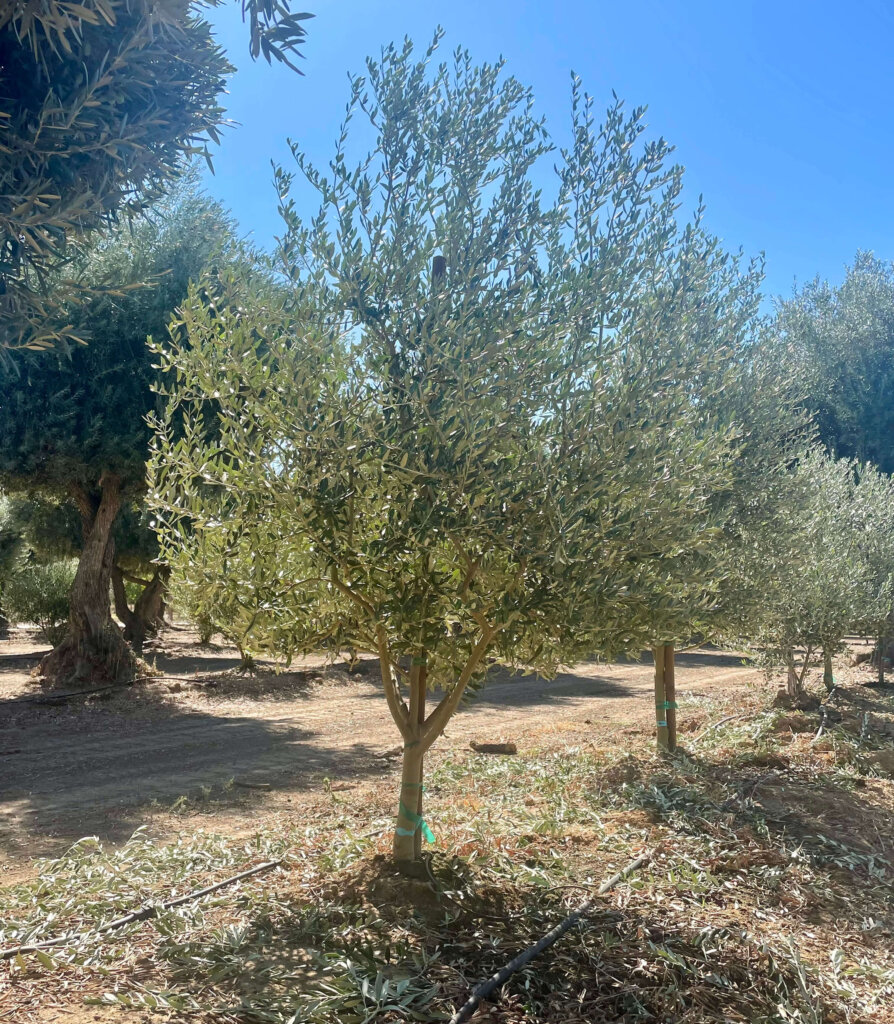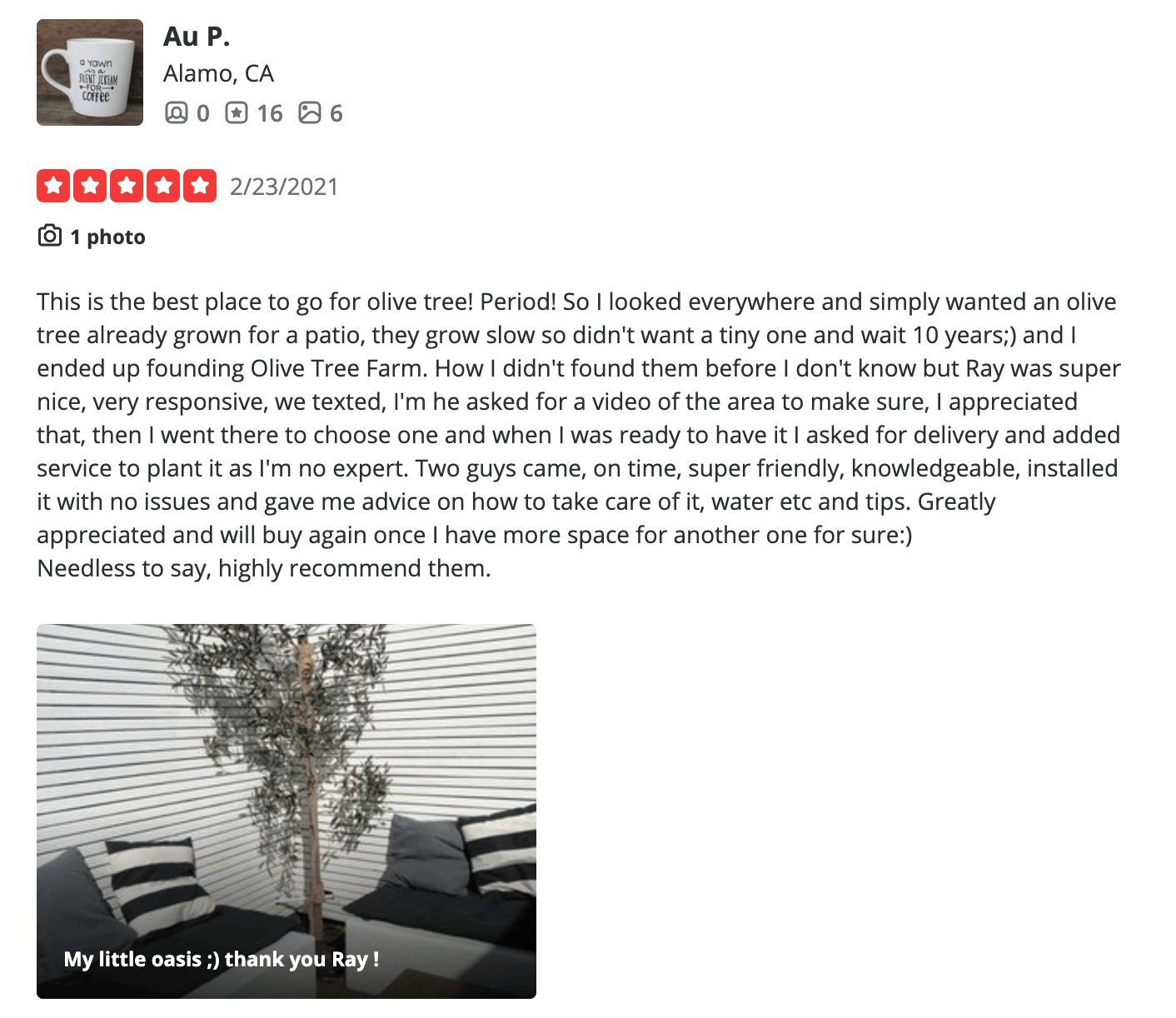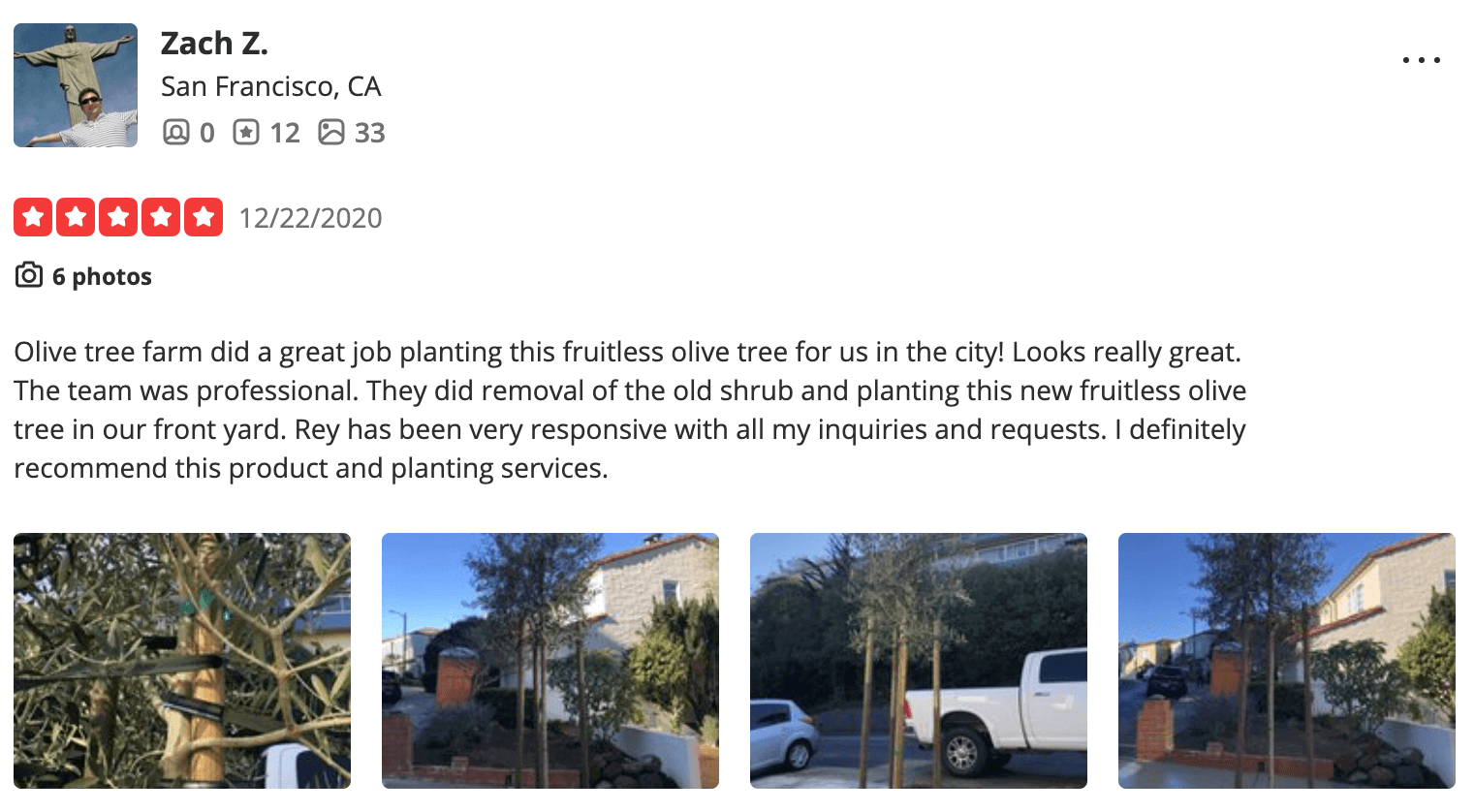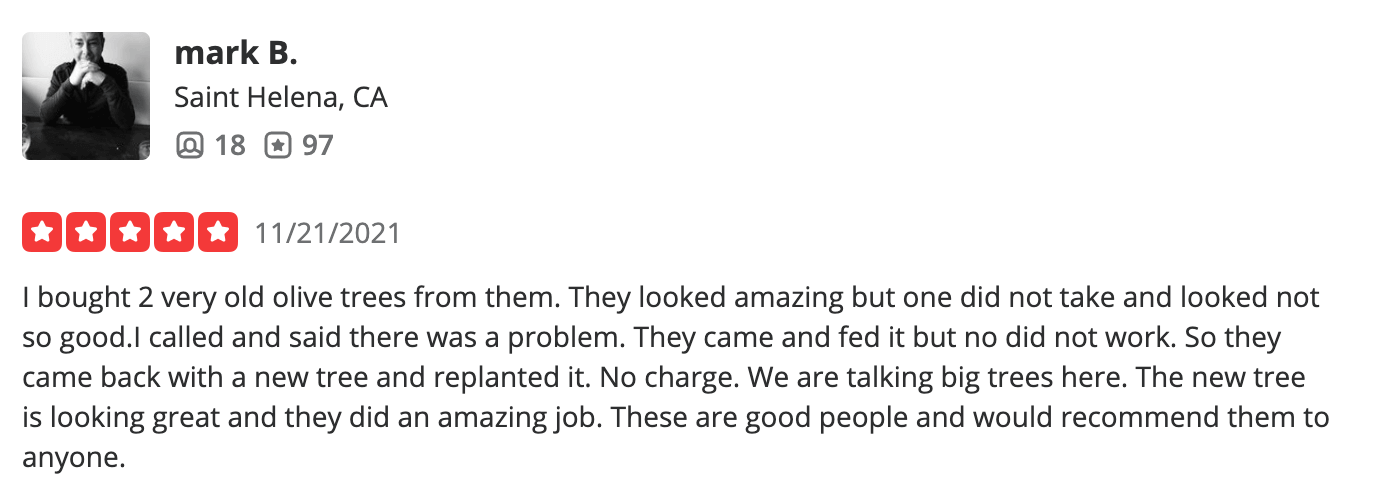Nocellara del Belice olive trees
‘Nocellara del Belice’ olive trees originate from Italy and are renowned for their Sicilian heritage. They are one of the principal varieties used in Italian table olive production, as well as in olive oil production. Known for their rich, buttery flavor, they are primarily cultivated in the Valle del Belice region in southwestern Sicily. While ‘Nocellara del Belice’ was initially cultivated in Sicily, it is now planted in various parts of the world and performs well in California and other regions with Mediterranean climates. Its olive oil taste is robust and fruity; therefore, it is often appreciated on its own but can also be blended with other varieties. It is sometimes interplanted with cultivars like Coratina, Frantoio, and Moraiolo for cross-pollination and to provide different flavor profiles.
- Fruiting Specimen
Bloom: Spring
Growth: Vigorous
Leaf Color: Leathery Gray-Green
Olive Oil Flavor: Rich and Buttery
Uses: Commercial Production (Table Olives and Olive Oil)
Care and Maintenance
‘Nocellara del Belice’ olive trees thrive in well-drained, slightly alkaline soils. Water deeply and regularly during the first few growing seasons to establish a strong root system. Once established, reduce watering frequency as the tree is drought-tolerant. Protect young plants from extreme winter weather.
Written references to ‘Nocellara del Belice’ date back several centuries, but it is not necessarily considered one of the earliest cultivars in Italy. With increased popularity over the last few decades, ‘Nocellara del Belice’ is cultivated worldwide—primarily grown in California, Chile, and Australia, among other olive-producing regions.
Some of our ‘Nocellara del Belice’ olive trees for sale:

Olea Europaea ‘Nocellara del Belice’ olive trees. 8/9 feet tall by 5/6 feet wide.
| Quick Facts | |
| Origin | Italy |
| Scientific Name | Olea Europaea ‘Nocellara del Belice’ |
| Family | Oleaceae |
| Tree Type | Fruiting Specimen |
| Common Names | The Olive Tree, Leccino, Olea Europaea |
| Height | 8/9 feet tall by 5/6 feet wide |
| Toxicity | Non Toxic |
| Light | Full Sun |
| Watering | Drought-Tolerant |
| Soil | Well-Drained-Nutrient Poor Soil |
| Hardiness | Hardy Down 20 to 30 °F |
| Foliage | Leathery Gray-Green |
| Growth | Vigorous |
| Olive Oil | Sweet |
Don’t Take Our Word, Hear What Our Customers Say!



Interested? We’d love to hear from you!
Call us at 707-732-6152 for a free consultation!
Looking for something else? We might have it for you...
Arbequina Olive Trees
Arbosana Olive Trees
Ascolana Tenera Olive Trees
Cerignola Olive Trees
Coratina Olive Trees
Itrana Olive Trees Kalamata Olive Trees
Koroneiki Olive Trees
Leccino Olive Trees
Little Ollie Dwarf Olive Trees
Majestic Beauty Olive Trees
Manzanillo Olive Tree
Maurino Olive Tree Mission Olive Tree
Pendolino Olive Trees
Picholine Du Gard Olive Trees
Picual Olive Trees
Sevillano Olive Trees
Swan Hill Olive Trees
Wilsonii Olive Trees
Zitoun Olive Trees